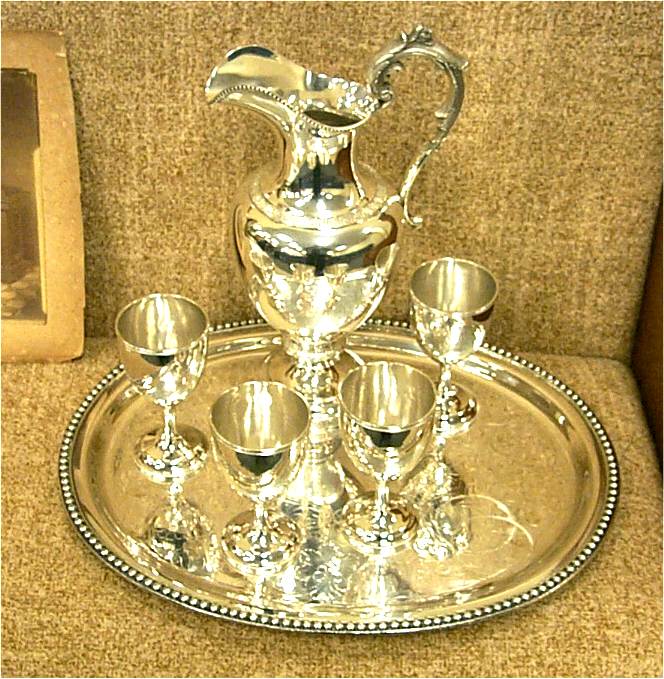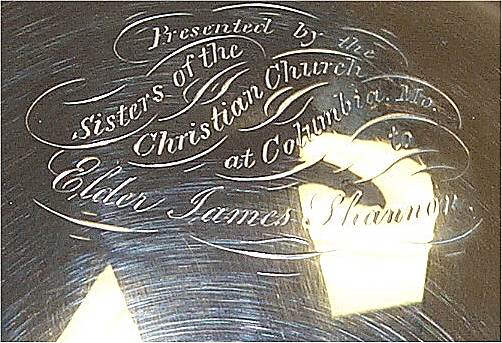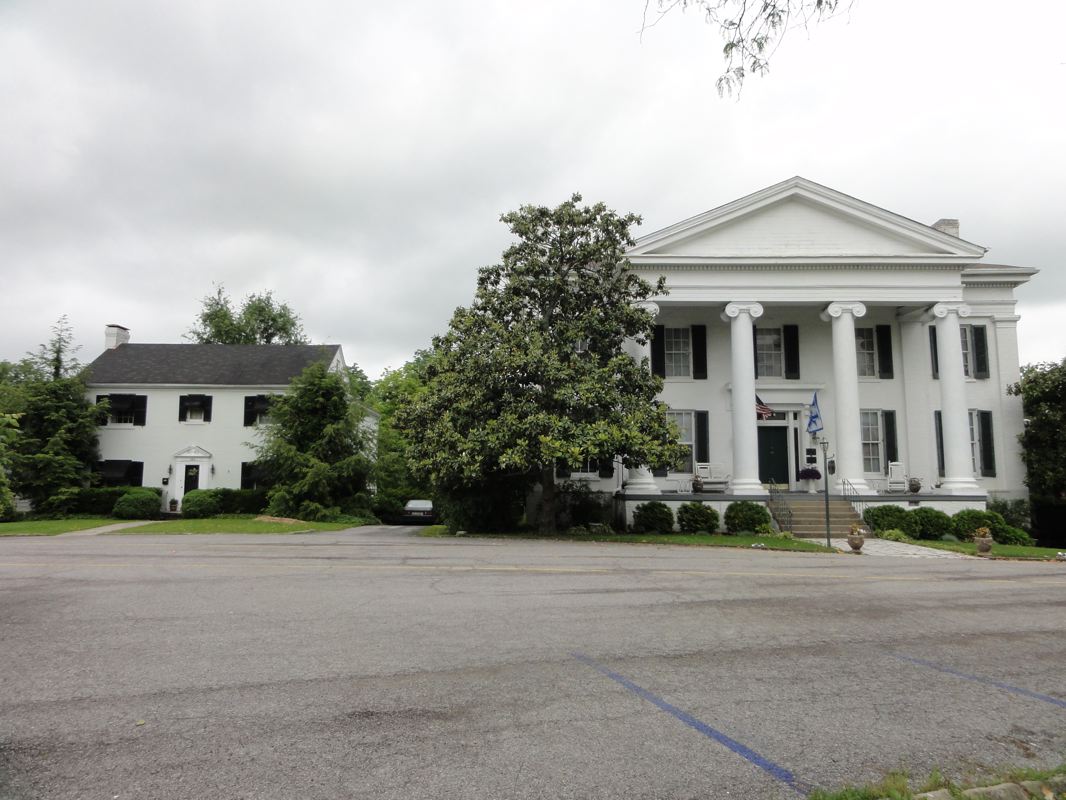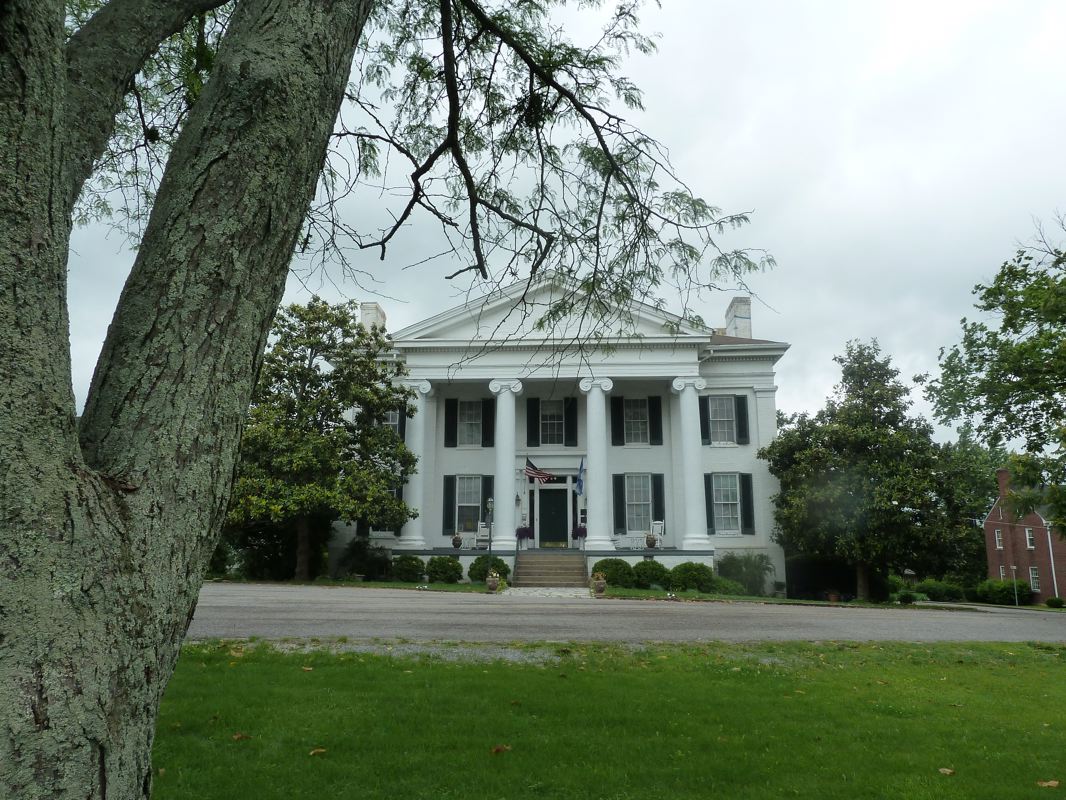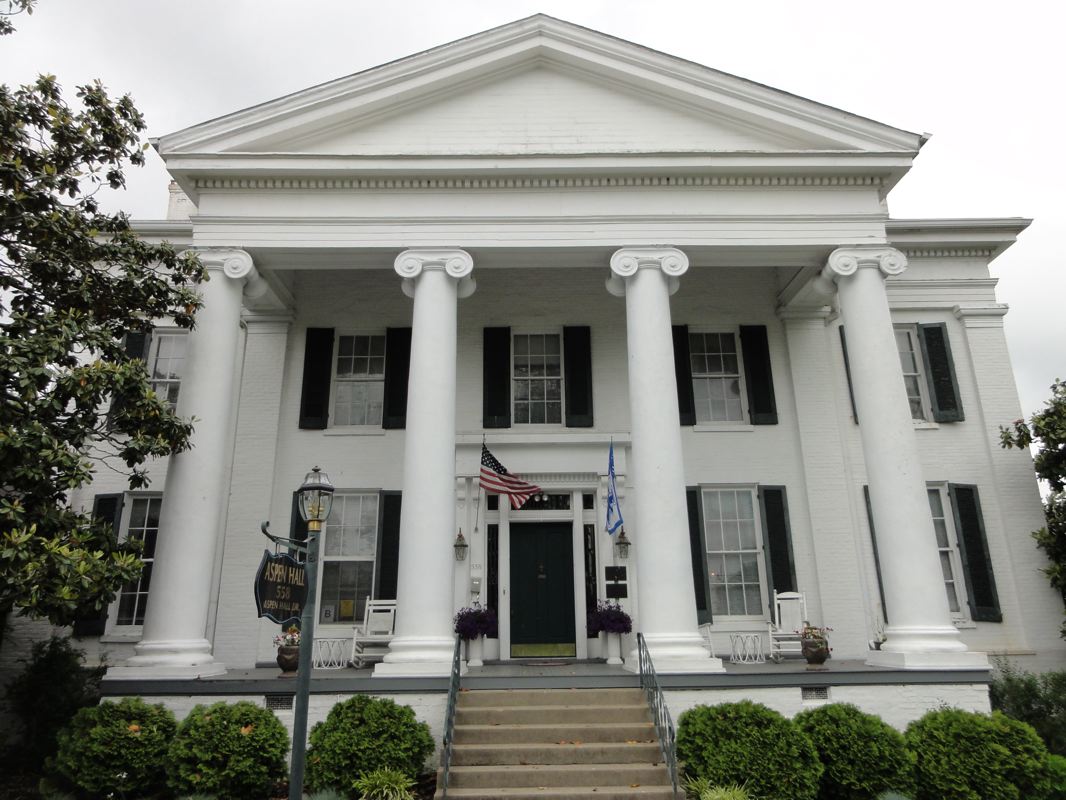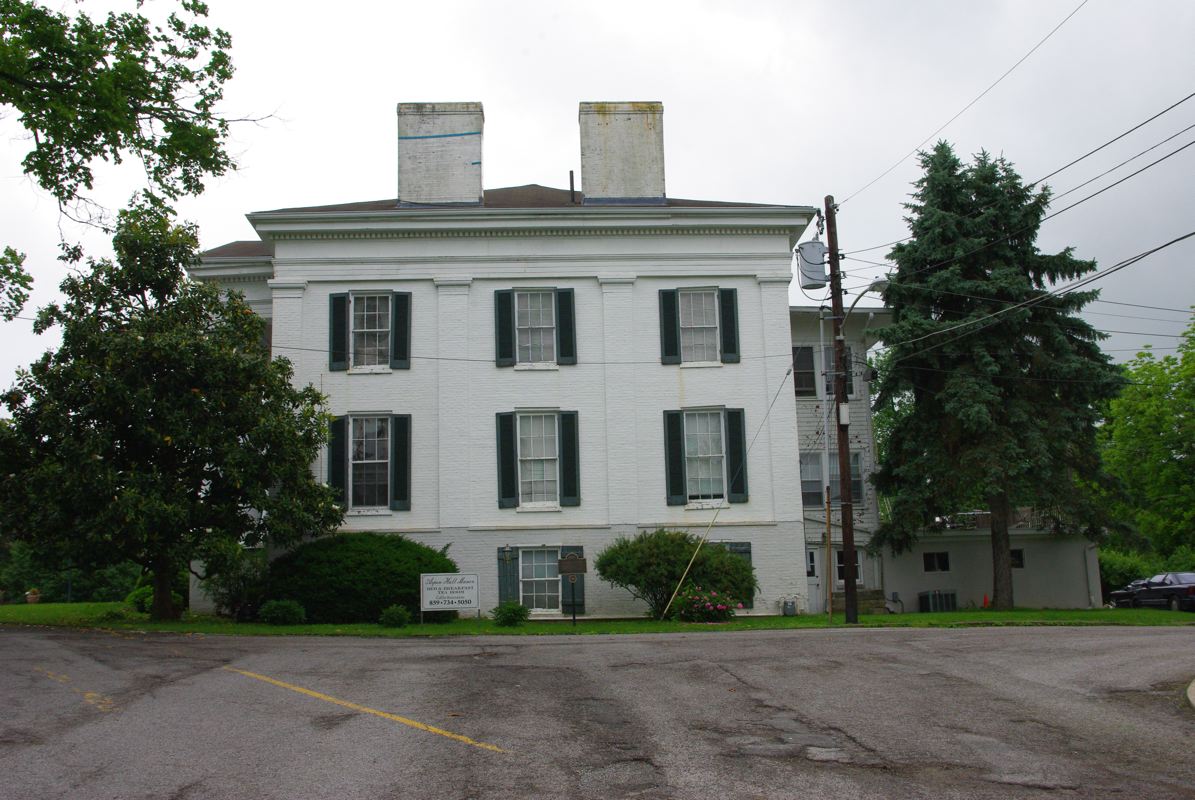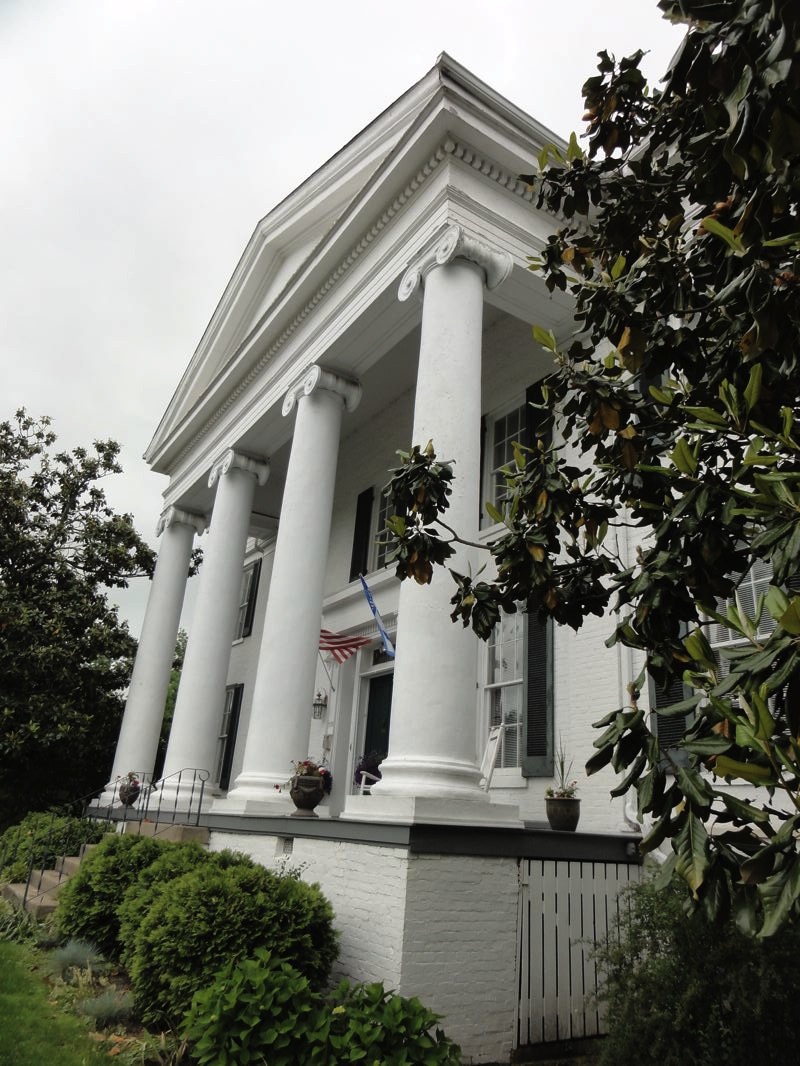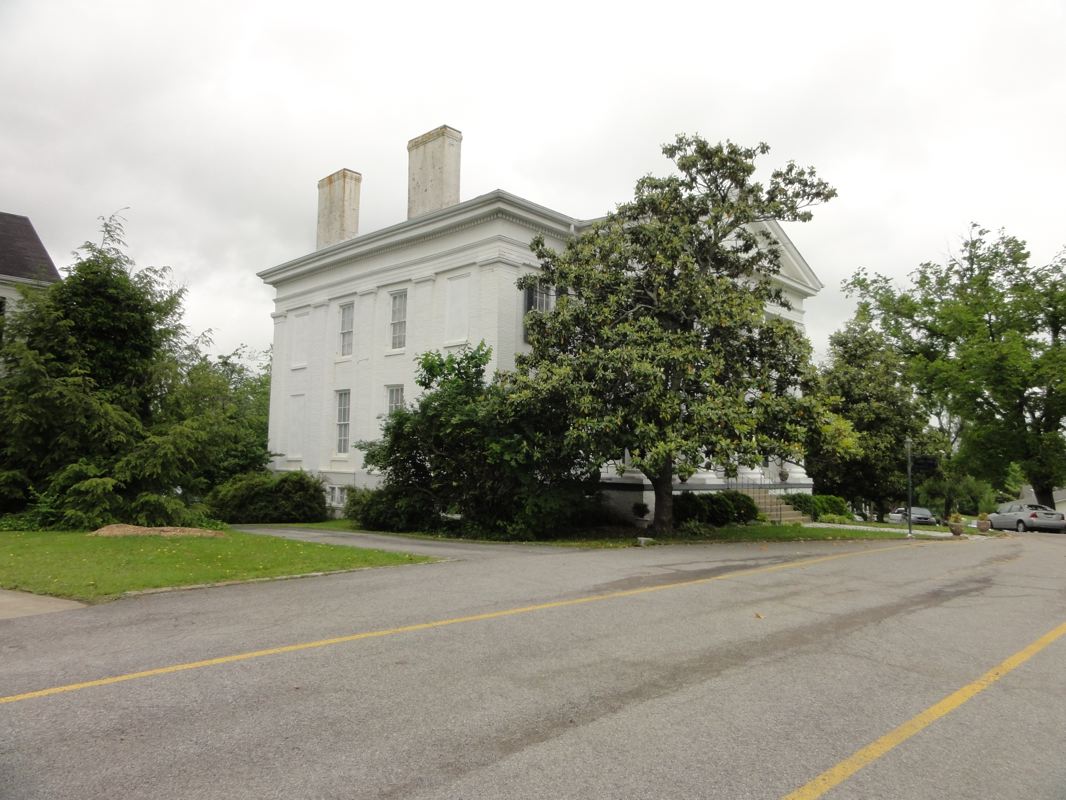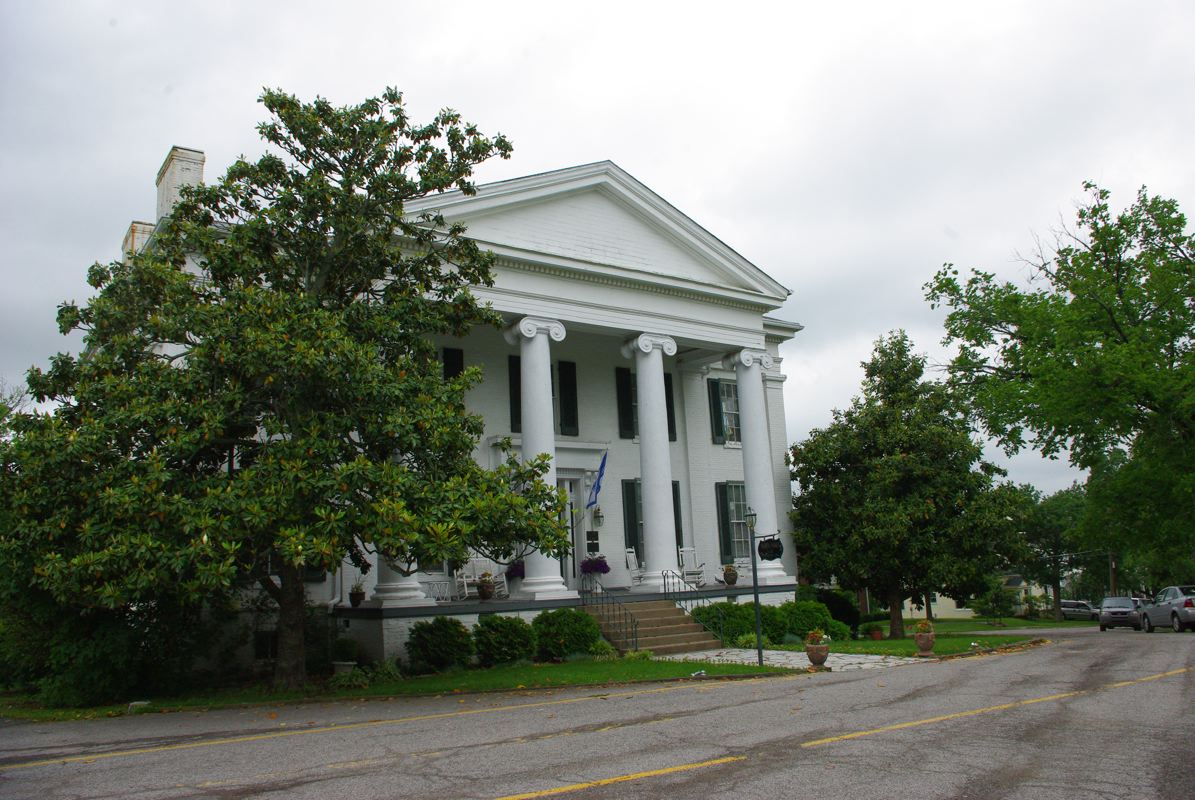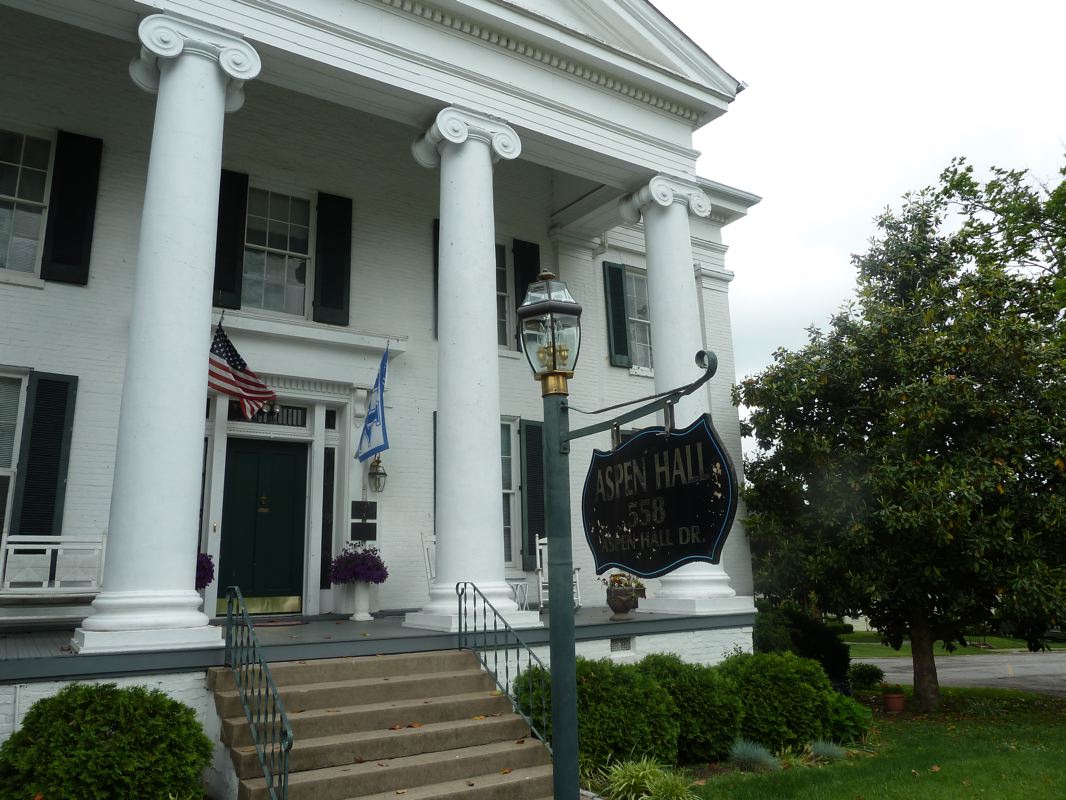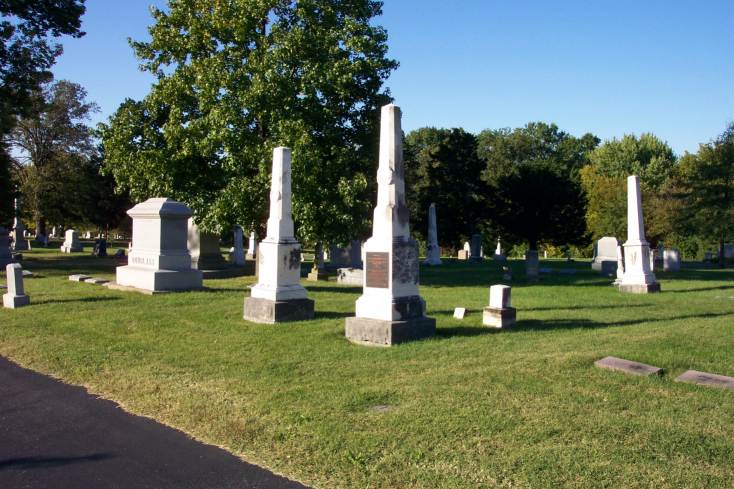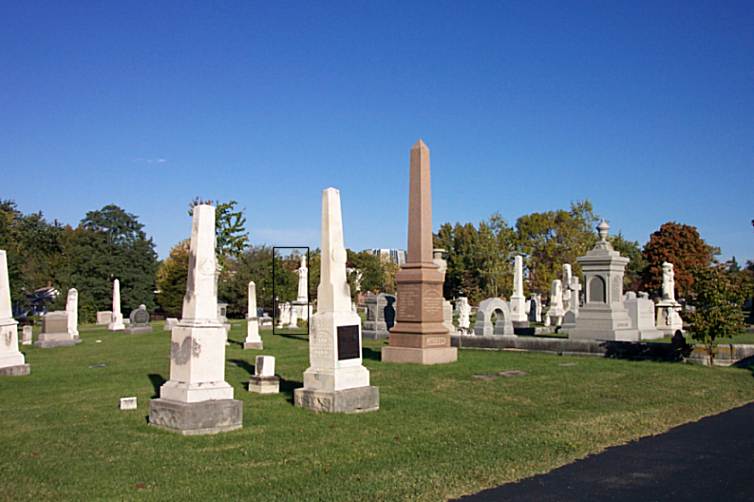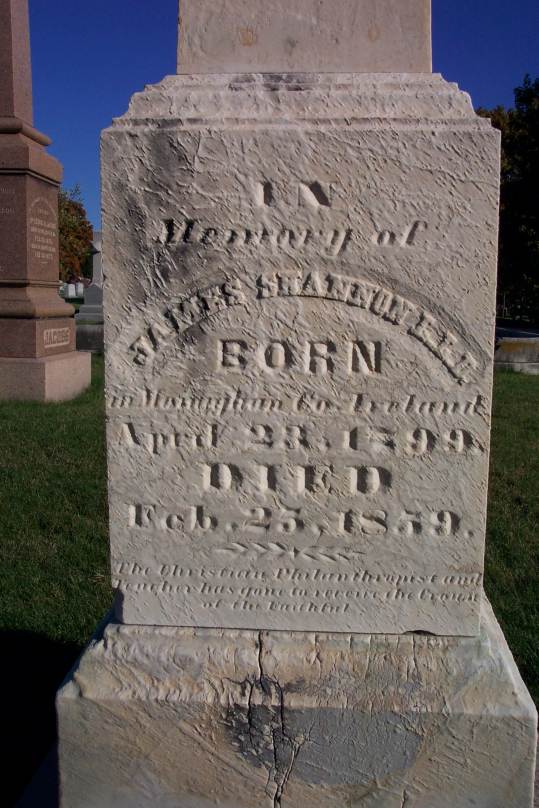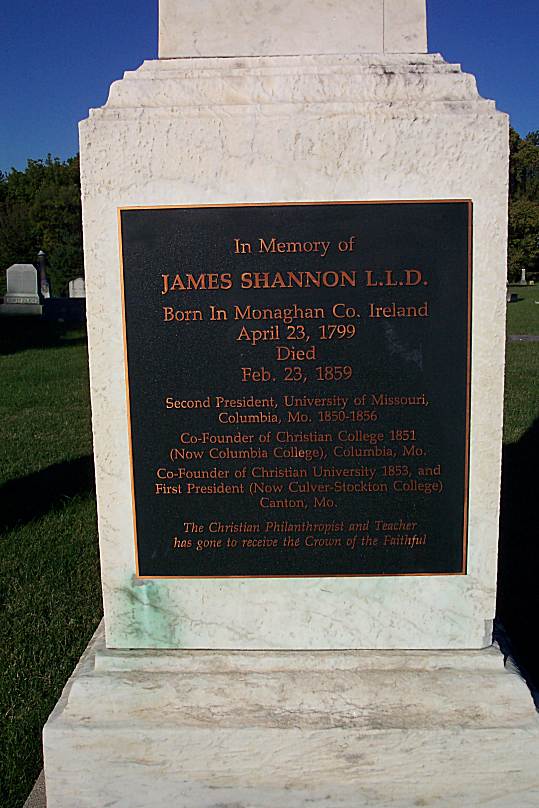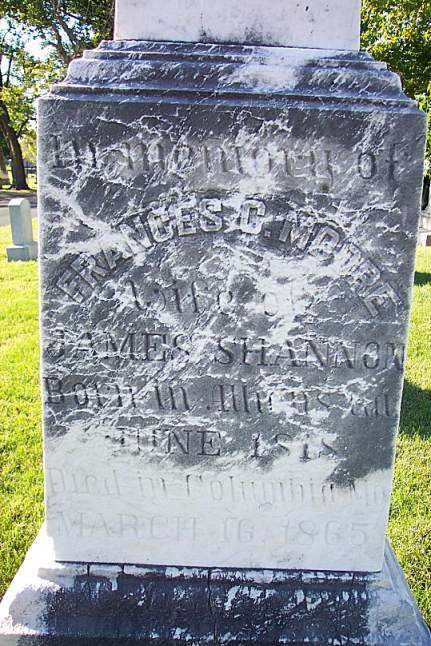Dr. James P. Shannon
1799-1859
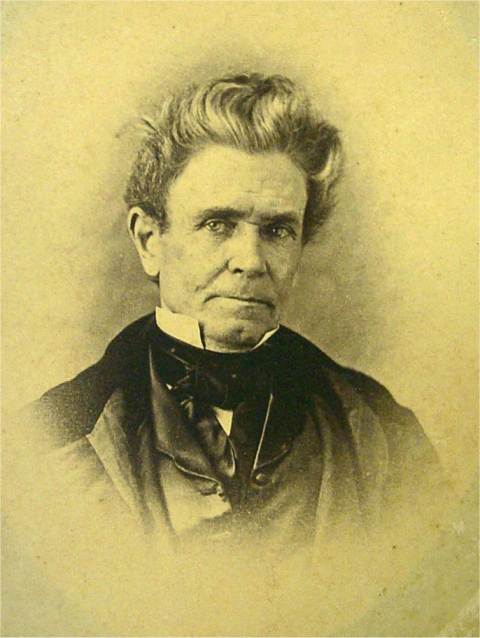
Biographical Sketch
Shannon: A Tempestuous Irishman
James Shannon's Trail Of Truth
Visit By Shannon Biographer
Silver Service
Aspen Hall
Audio Lecture
Directions To Grave
Grave Photos
Biographical Sketch On The Life of James Shannon
Without a doubt, we know that early Christians owned slaves. The letter to Philemon was written to a slave holder who was encouraged, but not commanded to allow his runaway, now converted, slave to assist Paul: "But without your consent I wanted to do nothing, that your good deed might not be by compulsion, as it were, but voluntary" (Phile. 14). [All scripture references are from the NKJV unless otherwise noted]. Ephesians 6:5-9 and Colossians 3:22-25 provide practical guidance to both masters and servants. Yes, salvation was for all (Gal. 3:28). Christians in the first century reformed society through personal work not political reform.
God has always been able to work his wonders in all types of governments. In the Old Testament, he often used Israel's enemies as his instruments to chastise. That did not mean that he approved the practices of these idolatrous nations. Similarly, slavery was tolerated and humane treatment urged, but the hegemony itself was not attacked.
The issue of slavery became particularly divisive in American society in the 1840s when both the Methodists and Baptists divided over the question. The Presbyterians divided on the eve of the Civil War. Churches in the Restoration Movement by and large escaped division over the issue chiefly due to the political pacifism of the leading editors and preachers of the day. Further, the goal of uniting believers was paramount, and therefore most brotherhood preachers chiefly ignored the subject. Interestingly though, according to one estimate (Fee 26), members of the church owned more slaves per person than did their religious neighbors. Slavery was widely, howbeit, silently practiced.
Of late, the Disciples of Christ have expressed remorse for this silence. A resolution passed by the General Board in 2001 apologizes for the silence (Business Docket 312) and likely paves the way for urging the U.S. Congress to consider slave reparations. In our own brotherhood, apologies concerning admission policies at Christian colleges have made headlines. We would do well to consider the historical antecedents of segregation.
That means examining brotherhood views of slavery. One notable exception to the silence was James Shannon. Shannon shocked many in his day by his defense of slavery. Allow me to introduce Shannon to you.
James Shannon (22 April 1799-25 February 1859), educator and evangelist, identified with the Restoration Movement in 1836. He presided over four literary institutions: College of Louisiana (Centenary), Bacon College, University of Missouri, and Christian University (Culver-Stockton College). Reactions to Shannon's anti-abolitionist views have suppressed his positive contributions.
Shannon was born in Monaghan County, Ireland, and educated at the Royal Belfast Academical Institution. He taught briefly in Antrim before moving to Sunbury, Georgia, in 1821 to teach at Sunbury Academy. Shannon left the Presbyterian Church, was immersed, and in 1823 became an ordained Baptist preacher. In 1823 he married Evelina Belmont Dunham. From 1826-1829 he preached for the Augusta Baptist Church. His 1827 address at the Georgia Baptist Convention launched a campaign for a Baptist school of higher learning, Mercer College. In 1830 Shannon became chair of Ancient Languages at Franklin College (University of Georgia, Athens). While in Athens, he helped organize and preached for the Baptist Church. In 1834 Shannon urged fellow Baptists to accept baptism as a prerequisite for salvation.
From 1835-1840 Shannon presided over the College of Louisiana. In Jackson, Shannon bore the loss of a wife, left the Baptist Church, established a church of Christ, and rose in favor with Restoration leaders and editors. In 1837 he married Frances Carey Moore, who was converted during a southern tour of Alexander Campbell in 1839.
From 1840-1850 Shannon was president of Bacon College in Harrodsburg, Kentucky. In 1841 Shannon spoke at the Lexington Unity Meeting. In 1843 he made necessary preparations for Campbell's debate with N. L. Rice. An 1844 defense of slavery marked Shannon as a slavery apologist. About 1847 Shannon erected a beautiful mansion "Aspen Hall" which still graces Harrodsburg. The political events of 1849 encouraged Shannon to reprint the slavery address and to debate John C. Young on the issue.
From 1850-1856 Shannon presided over the University of Missouri at Columbia. In 1851 he helped establish Christian Female College (Columbia College). In 1852 Shannon spoke at the American Bible Union Convention in Memphis, Tennessee, and was commissioned to translate the Gospel of Luke. Legislative opposition to Shannon intensified with his 1855 pro-slavery speaking tour and speech at the Lexington, Missouri, Pro-slavery Convention. As a "fire-eater," Shannon warned of division and war if abolitionists persisted. Shannon's views on owning slaves, if distasteful to brotherhood leaders seeking to avoid division, articulated what the brethren silently and widely practiced.
From 1856-1859 Shannon led Christian University (Culver-Stockton College) in Canton, Missouri, as its first president. He died in 1859 and is buried in Columbia, Missouri.
Acknowledgment of controversial leaders sometimes leads to embarrassment by institutions and individuals still linked to the feats and/or antics of persons now deemed radical or wrong. Better a shadowy reference than a glowing embarrassment seems to be the conventional wisdom. However, few are without fault, and to dismiss the accomplishments of others because of their controversial stances distorts the history of ideas and events.
The truth of the matter is that Shannon was brave enough to admit what the brethren widely practiced. To his credit, Shannon treated his slaves well and avoided particularly racist arguments. He was willing to concede that slavery could be abolished with just compensation to the slaveholder, but held that slavery was divinely ordained by God because it was mentioned in the Bible. He never seemed troubled that the great American experiment of a "republic" was not in the Bible. Neither, did he experience dissonance in telling his students, "to call no man, master."
From 1836-1859 Shannon was at the very center of both school and church in the American Restoration Movement. The study of his life provides a needed looking glass for viewing the social movement from inception to maturation stages.
WORKS CITED
Business Docket and Program. General Synod/Assembly, Christian
Church (Disciples of Christ), Kansas City, MO, 13-17 Jul. 2001.
Report No. 0113: 309-312.
Fee, John G. Non-fellowship with Slaveholders: The Duty of Christians.
New York: John A. Gray, 1851.
Poyner, Barry C. Bound to Slavery: James Shannon and the Restoration Movement. Fort Worth: Star Bible, 1999
_____________________
-2002 FHU Lectures, RESTORATION LEADERS:JAMES SHANNON, Barry Cole Poyner, pages 336-339
Back To TopShannon: A Tempestuous Irishman
James P. Shannon was a first generation restorationist in America during the 19th Century. He was a distinguished educator as well as a successful Christian evangelist of the early 1800's. Shannon had a checkered career which created situations that more nearly resembled a "tempest in a teapot." Some thought of him as one of the most colorful and controversial leaders of the era. He spent the greater part of his life in Kentucky and Missouri but his earlier years were spent in Georgia and Louisiana. He was a close associate and confidant of the best-known leaders of the Restoration Movement.
FAMILY, EDUCATION, AND RELIGIOUS VIEWS
James Shannon was born on April 22, 1799, in Mouaghau County, Ireland. Though his parents were farmers they were able to enroll him in the Royal University of Belfast where he was educated for the Presbyterian Ministry. He earned a Baccalaureate Degree at the age of twenty and a Master's Degree two years later with high honors. He became an eloquent public speaker and fluent in the Greek and Latin languages. Shannon taught school for a time in Ireland and in 1822 he migrated to America and settled in the state of Georgia. He accepted the Rectorship of the Sunbury Academy which was supported and controlled by the Presbyterians.
Shannon soon began preparation for the examination to be ordained by the Presbytery. He decided to deliver an ordination sermon on the subject of "Infant Baptism." After an in-depth study of the subject he was convinced that sprinkling infants - was unscriptural. He refused to be ordained as a Presbyterian and was immersed into the Baptist church. He later became "pastor of the Baptist Church in Augusta, Georgia." In 1830 he moved to Athens where he preached for the Baptists and served as head of the Department of Ancient Languages at the University of Georgia. After five years at Georgia he became president of the State Teachers College in Jackson, Louisiana.
CONTACT WITH CAMPBELL
While living in Jackson, Shannon became acquainted with the writings of Alexander Campbell through the Christian Baptist. In 1839 Campbell visited Jackson and preached in the church which Shannon had organized upon the principles and plea of the Restoration Movement, the first to be established in the State of Louisiana in 1836.
On February 8, 1839, Campbell wrote to his wife Selina: "I am now safely lodged at the residence of our good brother Shannon, president of the Louisiana College. I have spoken here to very large and attentive audiences several (eight) times and expect to leave tomorrow for Woodville, Mississippi. " Dr. Robert Richardson called Shannon, "A fine scholar and an earnest disciple," and credited him with having already established the church in Jackson before Campbell went there.
FIRST COLLEGE: BECAME PRESIDENT
Bacon College was the first college started by brethren in the Restoration movement. It was started in Georgetown, Kentucky in 1836. James Shannon became president of this college in 1840 when it was moved to Harrodsburg, Kentucky. In his inaugural address he indicated his desire to make the college a multi-purpose institution of higher learning in a climate of Christian education. Bacon College continued to suffer financial difficulties and declining enrollment, so Shannon resigned the presidency in 1845. However, the Board of Curators persuaded him to withdraw his resignation. He remained as president for five more years.
During Shannon's tenure at Bacon College a strong controversy arose between him and Carrol Kendrick, editor of the Ecclesiastical Reformer, which later became the basis of the conflict between Professor John William McGarvey and Regent James B. Bowman at Kentucky University.
Kendrick contended that the curriculum of the college should be organized in such a manner that the cause of the Restoration would be advanced. Shannon believed that the Bible should be made a part of the course of study but the doctrine of the church of Christ should not be taught. Bowman later followed Shannon's line of thinking when he proposed the Kentucky/Translyvania University would become a great university supported by both private and public funds. Shannon endeavored to start Bacon College down that same road ten years earlier.
Kendrick believed, as J. W. McGarvey argued later, that the Institution of higher education was created by the disciples, supported by them and should be under the control of the church, with the preparation of ministers being the primary purpose.
PRESIDENT OF UNIVERSITY OF MISSOURI
On October 19, 1849 Shannon went to Paris, Missouri, to attend and speak. to the State Convention of Churches. While he was in the state he went to Columbia to visit Thomas M. Allen and to consider the presidency of the University of Missouri. Allen had left Kentucky in 1836 and had become the minister of the church in Columbia and a member of the Board of Curators of the University. Shannon was elected as the president of the university by a vote of 8 to 2 and was inaugurated on July 4, 1850. He made it clear and plain to the Curators that he intended to continue to preach the gospel and that "legal restrictions would not prevent him from preaching." His opponents "accused him of turning that institution into a training school for Disciples preachers."
It is significant that Lanceford Bramblet Wilkes, native of Maury County, Tennessee, transferred from Bethany College to the University of Missouri and was graduated in 1853. Wilkes and W. H. Hopson were conducting a Female Academy in Palmyra hen Campbell visited there in 1853.
CRITICISM
Shannon received equally harsh criticism from some of his brethren who thought his advocacy of slavery and involvement in secular affairs made it difficult for him to be an effective church leader. Allen said that Shannon was "out during vacation chin deep in politics." However, he continued an active role in the affairs of the Columbia church sharing the pulpit with Allen, D. Pat Henderson and Samuel Church. Jacob Creath, Jr. reported that, "In the month of September (1853) I attended a meeting at Canton with brother James Shannon, president of our state university." During the month of August a year later (1854) Creath reported that, "D. P. Henderson, James Shannon and I held a meeting at Middle Grove, Monroe County, Missouri, at which we had fifty-five additions."
UNITY MEETING
Under the leadership of John T Johnson a "unity meeting" was convened at the Main Street Church of Christ in Lexington Kentucky on April 2, 1842, while Shannon was still president 01 Bacon College at Harrodsburg. Campbell agreed to "travel 100 miles out of my way to attend such a meeting in Kentucky." There were twenty-four preachers present at the meeting over which Johnson presided. On a motion made by Campbell "Brother Shannon was requested to deliver at seven o'clock this evening, a discourse on the Sin of Schism." In Shannon's address he pointed out that "all who love Jesus Christ" could unite and that "sects among Christians were following the works of the flesh."
CAMPBELL-RICE DEBATE
After Alexander Campbell accepted the challenge of the Presbyterians in Kentucky to debate N. L. Rice on the subject of baptism he appointed a committee composed of Shannon, Dr. James Fishback, Aylette Raines and Raccoon John Smith to arrange for the debate. The discussions between Campbell and Rice began in November 1843 in the Main Street church building with Henry Clay serving as presiding moderator.
DEFENSE OF SLAVERY
James Shannon was a forceful preacher and a brilliant educator but he was never accused of tempering his positions and statements with reason and judgment. He became militant in his defense of slavery. He contended that slaves were inferior and could not effectively live and care for themselves as free people and that the institution of slavery was approved by the Bible. The “firebrand" Shannon made a speech before a pro-slavery convention in 1855 in which he said, 'The right of property in slaves is sanctioned by the light of nature, the constitution of the United States and the clear teaching of the Bible." The passage of the 1854 Kansas-Nebraska Act by Congress deepened the opposition of Shannon to efforts to end slavery. He met with a group of students and encouraged them to volunteer "to invade Kansas and vote for slavery" in an effort to admit Kansas as a slave state.
Senator Thomas Hart Benton became one of the most powerful and bitter enemies of Shannon. On December 4, 1855 the Missouri State Legislature enacted a law stipulating that none of the appointees of the university "could preach or exercise the functions of a minister of the gospel." Rather than give up his preaching Shannon resigned and was elected president of Christian University in Canton. (Culver-Stockton.)
CONCLUSION
On February 25, 1859 Shannon died from an acute attack of asthma at the age of 60 years. His wife and family returned to Columbia where she operated a boarding house until her death on March 16, 1865. Shannon's friends said his best qualities were scholarship, honesty and loyal convictions. His enemies said his worst qualities were bigotry, intolerance and arrogance.
-Dr. Adron Doran, Evangelist 8605 Shelbyville Rd. 209 Louisville. KY 40222, World Evangelist, November, 1985, Page 5.James Shannon's Trail To The Truth
James Shannon (1799-1859), although widely known as an educator and evangelist in the first half of the 18th century, has remained an obscure figure in the Stone-Campbell Restoration Movement. If he is known by modern audiences at all, it is largely because of his controversial pro-slavery position articulated in two speeches polished for publication. Reactions to Shannon's views have suppressed his positive contributions to society, especially churches of Christ, Independent Christian Churches, and Disciples of Christ in the United States. Yet according to one estimate, this same fellowship of believers owned more slaves, by ratio, than any other religious group in the South. If distasteful to students of Restoration thought then and to romanticized histories today, Shannon mirrored what the brethren silently, yet widely practiced.
Shannon's religious path followed the trail blazed by Barton W. Stone, Alexander Campbell, and others who embraced nondenominational Christianity after unsuccessful efforts to reform their respective denominations. Gradually this impulse for religious reformation, fostered by political freedom, rugged individualism, and strict logical application of Scripture, gave place to restoration. Stone, Campbell, and their associates united in 1832. Shannon officially identified with the Restoration Movement in 1836. He was a disciple whose individualism worked for good and for ill. Ironically, the same impulse that gave rise to the movement was sometimes at the source of its undoing. The study of Shannon's life provides a needed prescriptive lens for viewing the entire movement.
Born in Ireland, Shannon benefited from a classical education at the Royal Belfast Academical Institution. For one and a half years he taught at Carley's School in Antrim. In 1821, he immigrated to the United States, first to teach, and later to head, Sunbury Academy in Sunbury, Georgia. After a period of intense biblical study and soul-searching, Shannon left the Presbyterian Church. He was immersed, and in 1823 became an ordained Baptist preacher. From 1826-1829 he preached for the Augusta Baptist Church and taught part time. Shannon was an early supporter of higher education among Baptists. An 1827 address on education at the Georgia Baptist Convention helped launch a campaign for a Baptist school of higher learning, Mercer College. In 1830, Shannon became the chair of Ancient Languages at Franklin College (later the University of Georgia). While in Athens, Shannon helped establish the Athens Baptist Church and served as its first preacher. In an 1834 sermon at the Georgia Baptist Convention, Shannon urged his audience to accept baptism as a prerequisite for salvation.
The years 1835-1840 were transitional years for Shannon, filled with numerous professional, religious, and personal choices. Shannon responded decisively. He accepted the presidency of the College of Louisiana (now Centenary College), left the Baptist Church, bore the loss of a wife, remarried, and rose in favor with Restoration leaders. Shannon gained the confidence of Alexander Campbell. His articles were prominently placed in brotherhood journals. At Campbell's urging, Shannon became the president of Bacon College (the first Christian college, preceding even Bethany) in Harrodsburg, Kentucky. His tenure spanned from 1840-1850.
Frustrated by the struggles in Kentucky, Shannon turned again to public education and accepted the presidency of the University of Missouri at Columbia, a position he held from 1850-1856. In 1851, Shannon helped establish Christian Female Co!lege (now Columbia College). In 1852, he acted on his desire to see a better English translation of the Bible by participating in a Bible Union Convention in Memphis, Tenn. His willingness to express his religious and political views resulted in criticism and legislative investigation. Opposition intensified with his 1855 pro-slavery speaking tour and involvement in the Lexington, Mo., Proslavery Convention. In 1856, Shannon resigned the post to become the first president of Christian University (now Culver-Stockton College) in Canton, Mo. Shannon held this position until his death three years later in 1859. Shannon traveled extensively on behalf of the university, but suffered ill health—possibly congestive heart failure—the last few months of his life.
Shannon's involvement in politics (particularly in Kentucky and Missouri), his educational philosophy, his slavery defenses, and his religious views tell the story of an academician who was much better at talking about terms of unity than he was maintaining it. Upon hearing of Shannon's death, Tolbert Fanning remarked, "Bro. Shannon has filled more high and responsible positions than anyone amongst us" (Gospel Advocate 1859: 185-186)
Editor's Note: Barry C. Poyner is an associate professor of communications at Truman State University, Kirksville, Mo, and the author ofBound to Slavery: James Shannon and the Restoration Movement. See book review on page 4 of this issue.
-Barry C. Poyner, Gospel Advocate, February, 2000, page 35
Visit By Dr. Shannon's Biographer
Webmaster's Note: It has been my joy to know Barry C. Poyner for a few years. His late father-in-law, Jim Lenoir (passed away in May, 2004), was a dear friend and elder at the Mastin Lake Road Church of Christ, Huntsville, Alabama, where my father, Richard Harp preached from 1990-2005. In October 2001, Barry came and visited in our home in Fayetteville, near Atlanta, Georgia. Barry had arranged to meets some of the Shannon descendants at a meeting at the Fayetteville Church of Christ. Some of the family artifacts were brought along among which was the Silver Service pictured below. It was my joy to travel with him down to Macon, Georgia, where we visited the library at Mercer University, a college Shannon contributed the first $100 to when it began in 1833. It was a joy to visit in the home of some of the direct descendants of James Shannon, and to see some of their precious memorabilia. Below are some of the articles the family allowed us to see and photograph.
Silver Service Presented By The
Sisters Of The
Christian Church At Columbia, Mo. To Elder James Shannon
Aspen Hall, Harrodsburg, Kentucky

Spend The Night In The
Home Of James Shannon
"Aspen Hall" Was Built By James Shannon In 1840
The 9000 Square Foot Greek Revival Mansion Is Now A
Bed & Breakfast In Harrodsburg, Kentucky
For More Information On Visiting The Home Click
Here For
Information.
Some Photos Taken In May, 2011
Below are some photos taken by Scott Harp, Tom L. Childers and C. Wayne Kilpatrick during a tour of Kentuck.y

JHT
Aspen Hall/Dr. James Shannon Home
Built on land originally part of Greenville Springs, this
imposing Greek Revival house was built in 1840 by Dr.
James Shannon, President of Bacon College. Later the
residence of John Bryan Bowman, Mercer County farmer
and crusader for higher education in Kentucky.

This Structure Has
Been Recorded By The
Historic American
Buildings Survey
Of The United States Department
Of The Interior For Its Archives
At The Library Of Congress
____________
This Property Has Been
Placed On The
National Historic Places
By The United States
Department of the Interior
Audio Lectures
Click On Icon Above To Download Your
Free Copy of Real player
Life of James Shannon (40.11 Min.; Barry Poyner, minister and biographer, came to Fayetteville Church of Christ, Fayetteville, GA, 10/31/2001, and reported on the Life of James Shannon. Some of the Shannon family members were present. He spoke on Shannon's life and his contributions to the Restoration Movement.)
Directions To The Grave Of Dr. James Shannon
James Shannon is buried in Columbia, Missouri in the Columbia Cemetery. If traveling on I-70 in Missouri take exit 126 in Columbia, North Providence Rd. (State Hwy. 163) and go south. Cross Nebraska Avenue and Business Loop 70. Stay on Providence Rd until you get to E. Broadway and turn right. Begin looking to the left for the entrance to the Columbia Cemetery. Enter main entrance. Go down drive toward the middle of the cemetery. Begin looking to the right. Cross Rollins Rd. and it will be on the right just past the enclosure of "J.S. Rollins," then the second monument. If you get to Garth Rd. you have gone too far. Section is on the west side of the road. Also in this section is the grave of another RM preacher, T.M. Allen. His monument is northwest of the Shannon plot.
GPS Coordinates of the Grave
38°56'58.1"N 92°20'14.8"W
or D.d. 38.949458, -92.337431
Grave Facing East
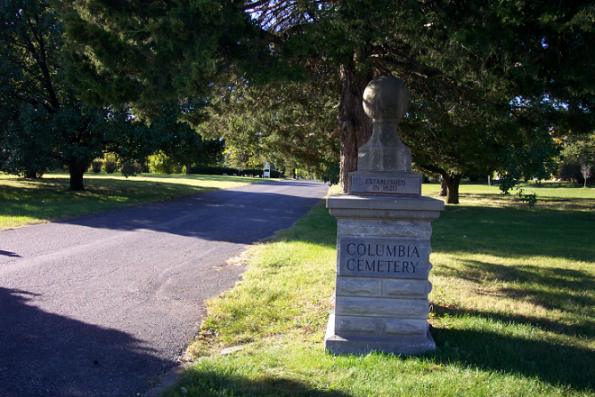
Shannon Monument, Center Obelisk Of The Three In
The Foreground With Bronze
Plaque On Front
In Line To The Rear Of Section (With Black Rectangle Around It) Is The Plot Of
T.M. Allen
IN
Memory Of
James Shannon L.L.D.
Born In
Monaghan County, Ireland
April 23, 1799
Died
February 25, 1859
The Christian Philanthropist And
Teacher Has Gone To Receive The Crown
Of The Faithful
In Memory Of
James Shannon L.L.D.
Born In Monaghan County, Ireland
April 23, 1799
Died
Feb. 23, 1859
Second President, University Of Missouri
Columbia, Mo 1850-1856
Co-Founder Of Christian College, 1851
(Now Columbia College), Columbia, Mo.
Co-Founder Of Christian University, 1853, And
1st President (Now Culver-Stockton, College
Canton, Mo.)
The Christian Philanthropist And Teacher
Has Gone To Receive The Crown Of The Faithful
In Memory Of
Frances C. Moore
Wife of
James Shannon
June 1818
Died In Columbia, Mo
March 16, 1865
![]()
